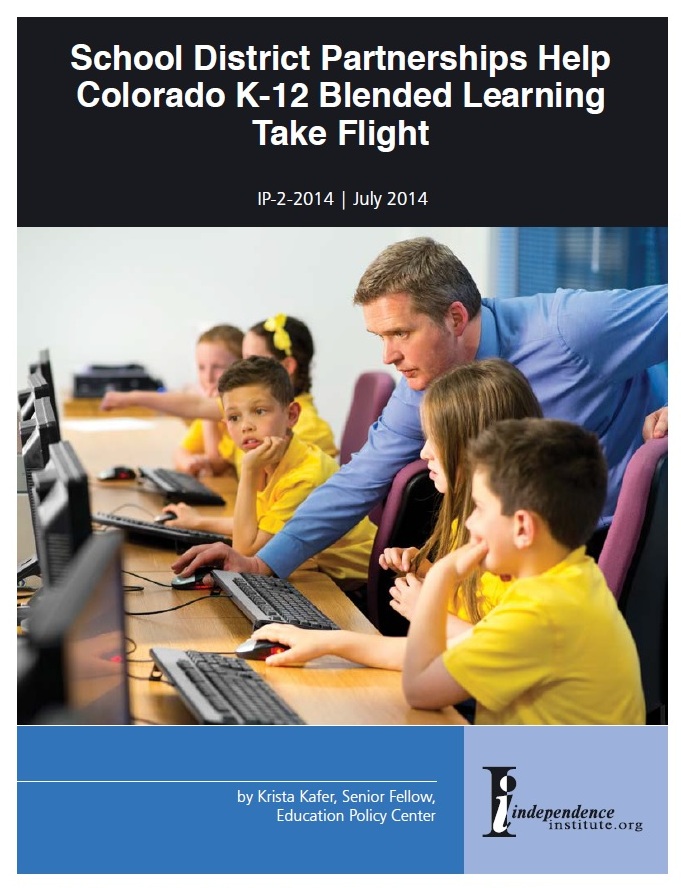IP-2-2014 (July 2014)
Author: Krista Kafer
PDF of full Issue Paper
Scribd version of full Issue Paper
Executive Summary
Blended learning is a versatile teaching method that combines in-person instruction with online learning in the classroom, lab, or other work space including home. When done effectively, blended learning enables teachers to automate activities such as testing, data analysis, and skills practice, thereby allowing them to focus on high-impact instructional strategies. Blended learning also allows teachers to differentiate instruction and increase student interaction with academic content. Although few studies have been conducted on the efficacy of blended learning, the research, including a 2013 RAND Corporation study, has found positive impacts.
This paper focuses on system-wide efforts in three Front Range school districts and a group of rural districts in the San Luis Valley. The report also provides a list of state and national resources for schools and districts looking to implement blended learning techniques on a limited or system-wide basis and questions to consider prior to starting. Blended learning implementation in Falcon School District 49, Greeley-Evans School District 6, St. Vrain Valley School District, and in the San Luis Valley varies from the degree of centralization to the use of partner organizations to how districts are building on existing resources:
- Greeley-Evans 6 had enjoyed success with its initial blended learning experience at its virtual school. With the support of The Learning Accelerator and the Colorado eLearning Collaborative, the district is beginning a multi-year, district-wide blended learning transformation.
- Falcon 49 began by introducing blended learning at its state-of-the-art Falcon Virtual Academy. Along with Yuma School District 1 and Pikes Peak Community College, the district also launched the first-of-its-kind Colorado Digital Board of Cooperative Educational Services (BOCES) to serve blended learning and online schools. Next year, Falcon 49 will introduce blended learning into brick-and-mortar classrooms.
- St. Vrain has implemented blended learning in its online school and credit recovery program. The district will launch several pilot Flipped Classrooms next year.
- In rural southern Colorado, 14 San Luis Valley school districts, the San Luis Valley BOCES, and the Colorado Education Initiative partnered to bring technology to the classroom as part of a broader inter-district collaboration to improve education throughout the valley.
The scope of implementation and district strategies for covering costs, developing buy-in, using existing resources, collaborating, and handling other challenges vary considerably. Still, the decisions to embark on blended learning all were motivated by a desire to improve student achievement, to give teachers additional instructional tools, and to take advantage of emerging instructional technology that can bring efficiency and potential cost savings. Although still works-in-progress, the experiences of these early adopters offer a roadmap for other Colorado districts.








